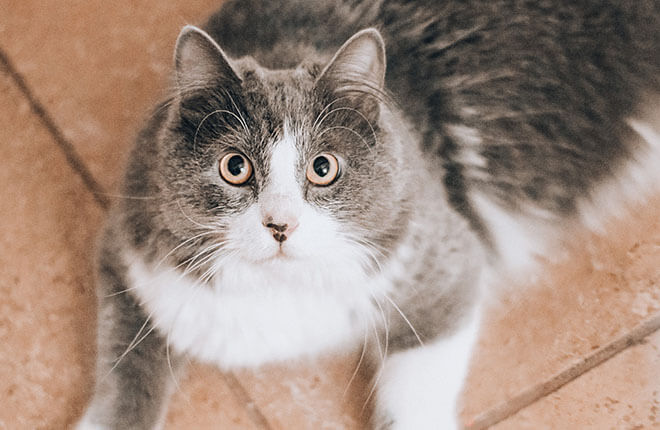We’re all relatively familiar with the most common insects, mites, and other pests our cats might encounter. Fleas and ticks are always at the top of the list, but what about the pests that carry other pests? Did you know that one critter can be infested with another critter that can then infest your cat? We’re talking about tapeworms — nasty parasites that hitch a ride with fleas. With a little education and guidance, keeping your cat safe from tapeworms is easy.
What Are Tapeworms?
Tapeworms are an intestinal parasite that can infest cats and dogs. The most common tapeworm in cats in the U.S. is called the Dipylidium caninum tapeworm.
An adult tapeworm is comprised of numerous small segments called proglottids. As a tapeworm matures inside a cat’s intestine, these segments break off and pass into the stool, giving the appearance of white rice in fresh stool. Interestingly, adult tapeworms at their full length may measure 4 to 28 inches.
How Can Your Cat Get Tapeworms?
Most tapeworms in cats are a result of an infection by the Dipyldium caninum tapeworm, caused by a cat inadvertently ingesting a flea. This can happen when cats groom themselves or by eating a small rodent infested with fleas. This is because fleas are the intermediate host of the tapeworm, meaning that it requires a flea to ingest its eggs for the tapeworm to evolve to full maturity. It will then develop into an adult inside the flea. The flea is then ingested by the cat. As the flea is digested, the tapeworm is released, hatches, and can infest the cat, completing its lifecycle.
Tapeworm infections are prominent in environments where fleas are more common and in cats who explore the outdoors.
Can Indoor-only Cats Get Tapeworms?
Yes. Although the risk is greater for those cats allowed some outdoor access, indoor cats aren’t immune to fleas and tapeworms. No house is completely free from pests. Although indoor cats are more likely to be hunting laser pointers or dangling feather toys, even the most docile of cats will chase a cockroach or mouse that finds their way inside.
Secondly, fleas will come in on the bottom of shoes, pants, bags, and other pets and can be picked up by your cat inside the home.
How Do You Know If Your Cat Has Tapeworms?
We often recognize our cat may have a tapeworm infestation when we see small, white, rice-like segments moving on or around the hairs near their anus. You may see your cat lick or groom their rear-end frequently. They may even “scoot”, dragging their backside along the ground. More commonly in cats, you’ll see the same type of rice-like segments on the surface of fresh feces. Some cats can occasionally vomit a tapeworm.
Luckily, cats seldom fall severely ill as a result of a tapeworm infection. However, they can suffer from weight loss, a dull coat, and lethargy. If you suspect your cat may have tapeworms, it’s important to visit your veterinarian immediately. If your cat is diagnosed with a tapeworm infestation, this likely means they also have a flea infestation that can cause a multitude of health issues and will require treatment as well.
Treatment for Cats with Tapeworms
There are various treatments for tapeworms in cats, not all of which are of the same caliber. For that reason, we always recommend that you speak to your veterinarian before you attempt to treat your cat. Treatment is accomplished with an anti-parasitic medication. They typically kill the tapeworm while it is still inside your cat, where it is then digested in their gastrointestinal system. Keep in mind, treating tapeworms and not their cause — fleas — will leave you with an incomplete treatment plan. Always discuss a full treatment plan, including environmental control of these parasites, with your veterinary team.
Preventing Tapeworms in Your Cat
The most effective way to help prevent tapeworms in cats is through flea control. As with most common parasites, prevention is always better than trying to treat an infestation once it occurs, requiring treatment of not only an ectoparasite — the flea — but an endoparasite — the tapeworm. This is why flea preventatives are recommended year-round, preventing fleas from making their way onto your cat or into their environment and bringing tapeworms with them.
ZPC-01492R1





